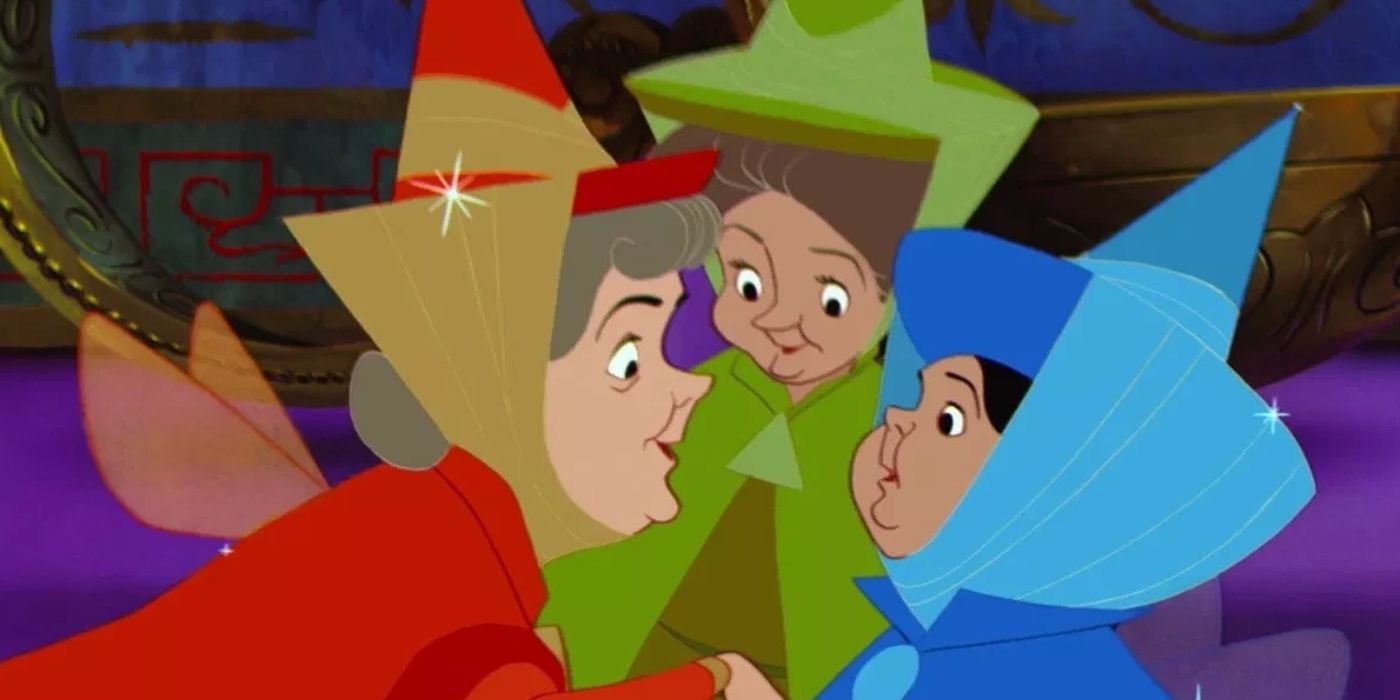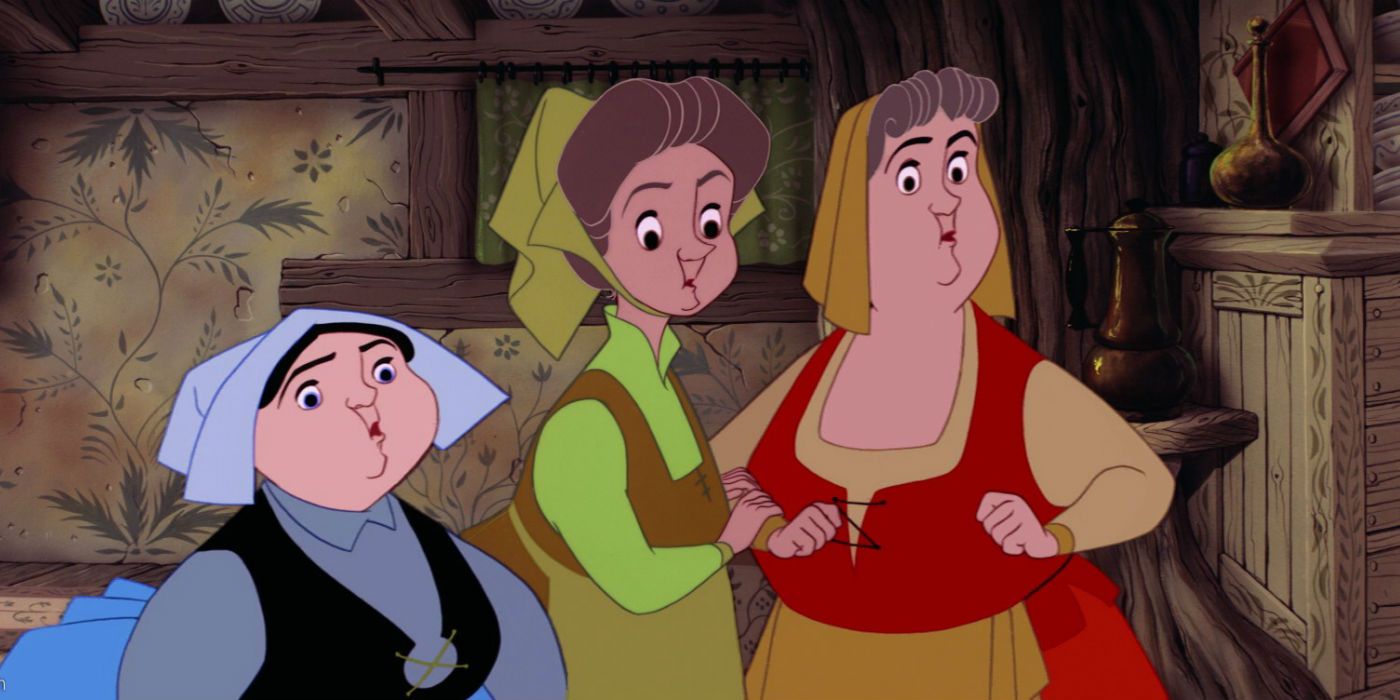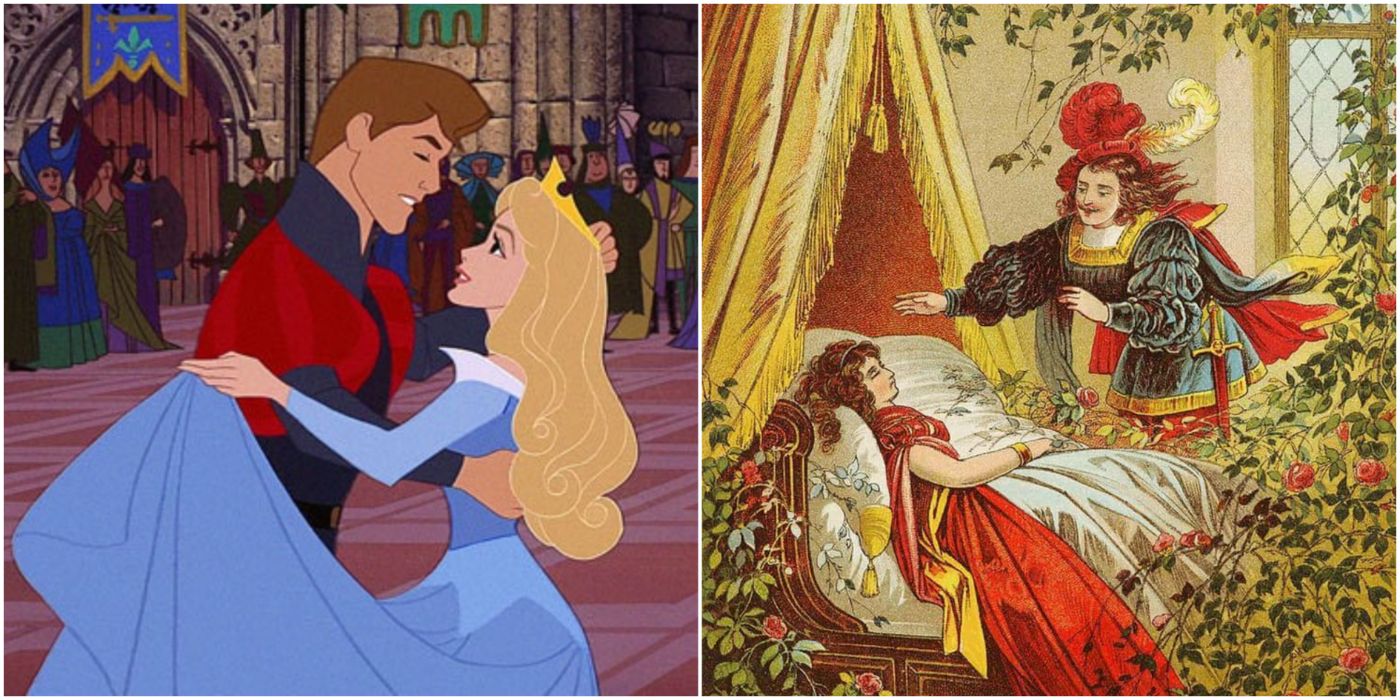When discussing the Disney Princesses and comparing their strengths, most fans tend to point to Aurora, the princess of 1959's Sleeping Beauty, as the "least feminist" of the bunch. She, and the film she features in, are seen as the perfect example of every negative stereotype about the Disney Princess; she's lambasted as a pretty face who does nothing but dream of a prince to save her. The film is critiqued for focusing on fairies instead of the princess and for lacking even the characterization of Cinderella and Snow White. What many miss, however, is what the film looks like in comparison to the original fairy tale.
The original "Briar Rose" or Sleeping Beauty story composed and compiled by the Brothers Grimm and Charles Perrault centuries ago has long been criticized for the unsettling nature of its central plot point: a prince comes upon a castle and kisses an unknown, comatose woman without her consent, which is framed as the hero saving the day. It's one of those fairy tales that takes on a sinister nature in reality. Many question the themes of this Disney fairy tale romance and the messages it might send boys and girls about consent.
How Disney's Sleeping Beauty Changes the Fairy Tale Formula
Disney changed some of Sleeping Beauty's more problematic elements in 1959. Aurora meets Prince Philip well ahead of her encounter with the spinning wheel. They fall in love long before the famous kiss while unaware of each others' true identities as destined prince and princess, liking one another simply as they are. Prince Philip is fully aware, thanks to the fairies, of how the kiss will awaken Aurora and has received her consent for courtship, love and possible marriage already. Thus, Disney managed to somewhat fix the stranger kissing a comatose woman without her consent element of the original story.
Disney went a step further in making Sleeping Beauty a more feminist tale. On top of fixing the disturbing central plot point, Disney also gave the role of main protagonist not to the young male hero, the king, or even the young princess. Instead, Sleeping Beauty's main characters are actually the three fairies, Flora, Fauna and Merryweather. It places the focus on three magical, middle-aged women with no husbands, a rarity not only for Disney but for any film. It more than passes the Bechdel test and allows the fairies to help save Aurora alongside the prince.
How Sleeping Beauty Subverts The Hero Formula
Sleeping Beauty is also, of course, remembered for its theatrical villain Maleficent. While Maleficent's initial clash, and the one from the fairy tale, is with the king, Disney chose to showcase Maleficent's clash with the three fairies instead. In the fable, the fairies only appear at the beginning to bestow their gifts, as does the "wicked fairy godmother" who curses the princess; from there on out, it's up to the prince to save the unwitting princess, who manages to prick her finger and doom her family. In Disney's movie, Maleficent lures Aurora into the trap. Aurora gets much more strength from this adaptational change, and the focus on the fairies, along with Prince Philip saving her, changes the messaging.
All of these changes take the original fairy tale from one of a woman as a helpless victim of petty jealousy who must be saved by the kiss of a strange prince into a tale of female camaraderie, conflict and reciprocal love. The Maleficent movie picked up on this and followed a similar focus on the mother-daughter bond, which has caught on in films like Brave and Lady Bird. The film could tell a more complete courtship while also giving the older, motherly women the film's key focal point and making them the heroes rather than the prince. What many can miss in the princess discourse is that creating a powerful female-centric story isn't always about giving an athletic young woman a grenade launcher -- though that can be fun too. It can also just be about giving women agency and focus, and Sleeping Beauty deserves more credit for doing so back in 1959.



